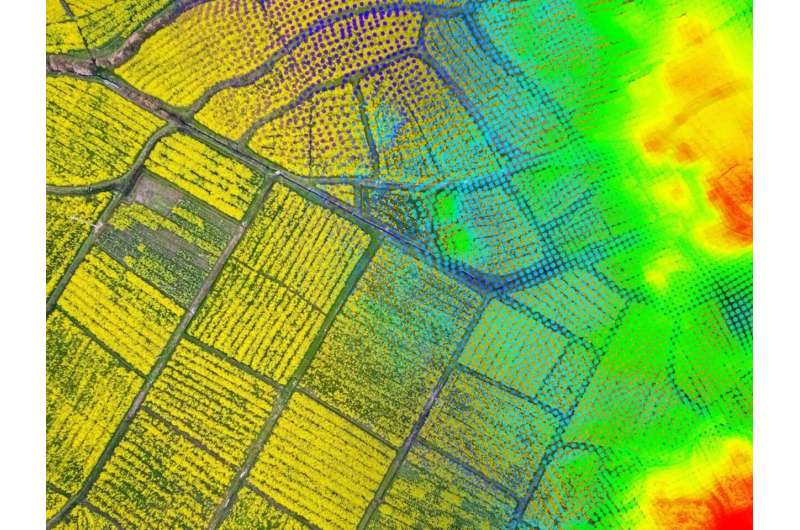This article has been reviewed according to Science X's editorial process and policies. Editors have highlighted the following attributes while ensuring the content's credibility:
fact-checked
trusted source
proofread
Modeling agriculture matters for carbon cycling

To understand Earth's changing climate, scientists often turn to science-based computer simulations. Researchers strive to make these Earth system models as accurate as possible. Factors such as wind currents, air quality, and weather patterns all play a role. But current modeling has often overlooked one important activity: agriculture.
Now, research from Pacific Northwest National Laboratory (PNNL) published in Journal of Geophysical Research: Biogeosciences has found that more realistically representing the effect of agricultural crops in an Earth system model can increase the model's skill by 40 percent.
"The differences between observations and previous model results were quite large," said PNNL Earth scientist Ben Bond-Lamberty. "Our new approach helps remove biases and errors from the model. This means it should be easier to see the fingerprint of climate change in carbon fluxes from these areas."
It is well understood that agriculture plays an important role in the carbon cycle. Through photosynthesis, plants take carbon dioxide from the air and use it to feed themselves and, eventually, us. While all crops contribute to carbon cycling, changing agricultural processes can significantly affect the amount of carbon uptake. Indeed, one potential avenue for mitigating climate change involves using agriculture to trap more carbon dioxide.
"Agriculture impacts both local and regional climate," said Eva Sinha, PNNL Earth scientist and lead author of the study. "That makes it an important part of climate models. The better we can represent the reality of agriculture, from the type of crops to land management practices, the more accurate our climate projections will be."
Modeling matters
Modeling is an essential tool for studying climate. Historical weather patterns help researchers look back to past climate patterns, but understanding the future requires projecting different possible outcomes. Earth system models are the only way to project different possible climate futures at high resolution across the globe. The closer they reflect real-world conditions, the better they can make predictions. The PNNL-led team introduced crop rotation into the land component of the Department of Energy's Energy Exascale Earth System Model. Researchers use this model to study global climate, including how it interacts with energy-relevant science.

Previously, the simulations treated all cropland as the same throughout the year. The new representation allowed the team to reflect different types of land use, specifically the corn-soybean crop rotations often planted across the U.S. Midwest. When the research team ran the model with crop rotation represented, the results for carbon exchanged between the crops and the air were significantly closer to observed values.
Observed values serve an important role in evaluating model results. An accurate model should produce results that are relatively close to observations, given the right inputs. Because incorporating different crop representations brought the model results significantly closer to observed values, the model will likely give more accurate representations of future carbon cycling.
"We believed that more accurately representing crops would improve the model," said Sinha. "But we didn't expect it would be this much better."
Managing crops, managing carbon
As researchers look toward predicting climate for the 21st century and beyond, their focus is on remaining uncertainties. Many ways that human behavior affects climate are both poorly understood and challenging to model. Agricultural management falls under both categories.
The increase in model accuracy could have significant implications for understanding how the land-based carbon cycle changes in different climate futures. Crops can act as a natural carbon sink. Understanding how different crops and agricultural practices affect carbon cycling can help researchers better identify what changes to the carbon cycle are due to climate change and what changes may be from different agricultural practices.
The team plans to study how agricultural choices affect the amount of carbon in the atmosphere—past, present, and future. "We want to understand what happens if we make crops a part of the solution," said Bond-Lamberty. "Modeling can help us understand which choices will have the biggest impacts."
More information: Eva Sinha et al, The Impact of Crop Rotation and Spatially Varying Crop Parameters in the E3SM Land Model (ELMv2), Journal of Geophysical Research: Biogeosciences (2023). DOI: 10.1029/2022JG007187
Provided by Pacific Northwest National Laboratory




















